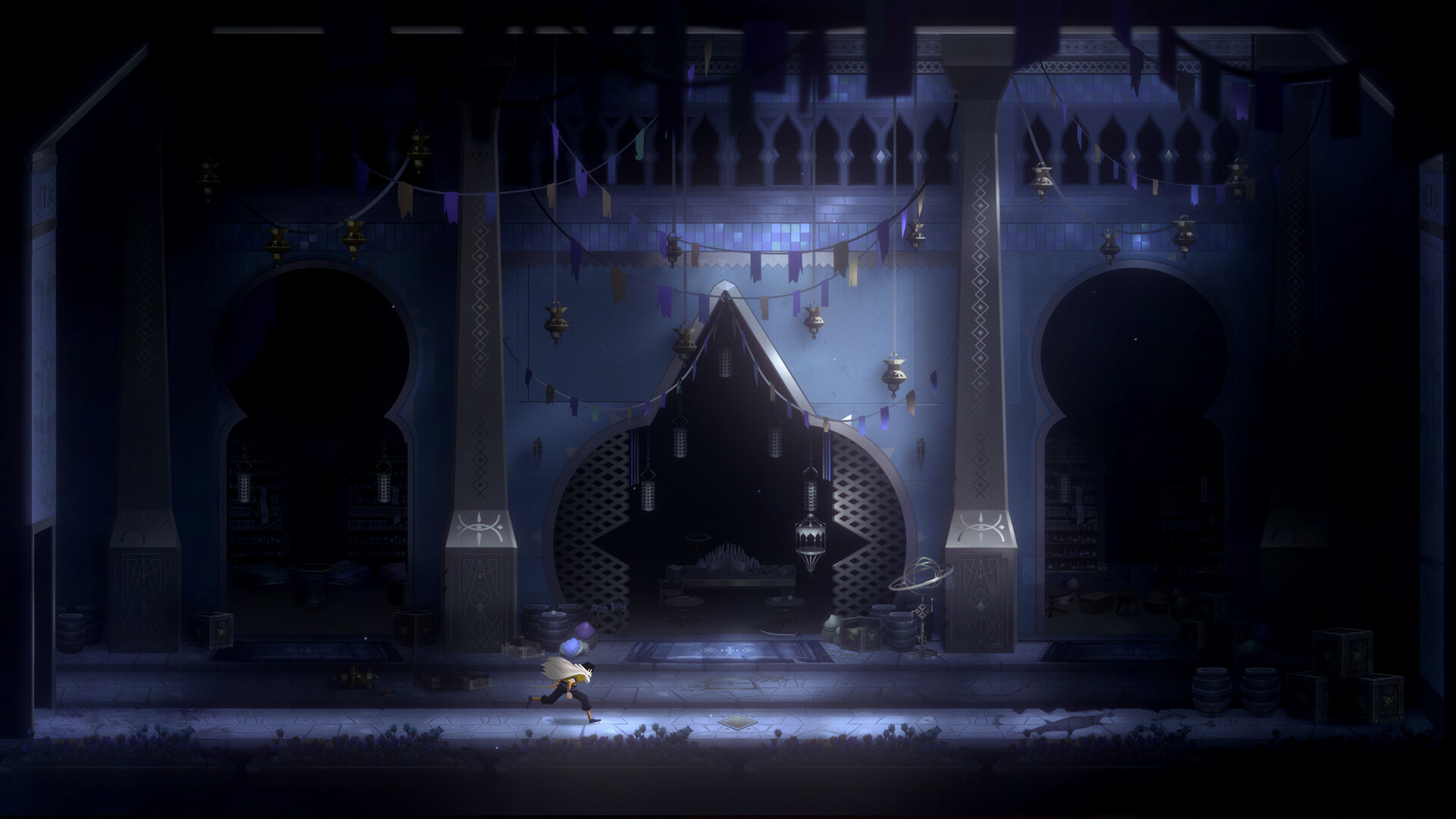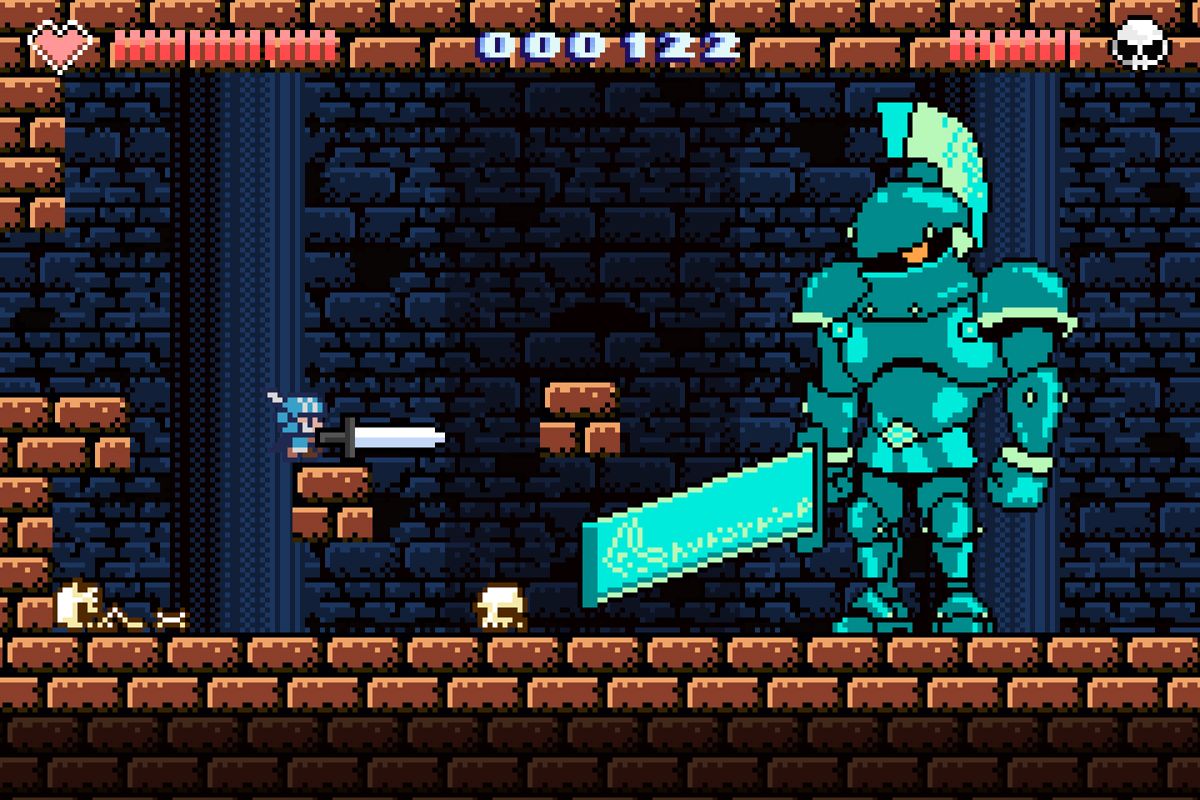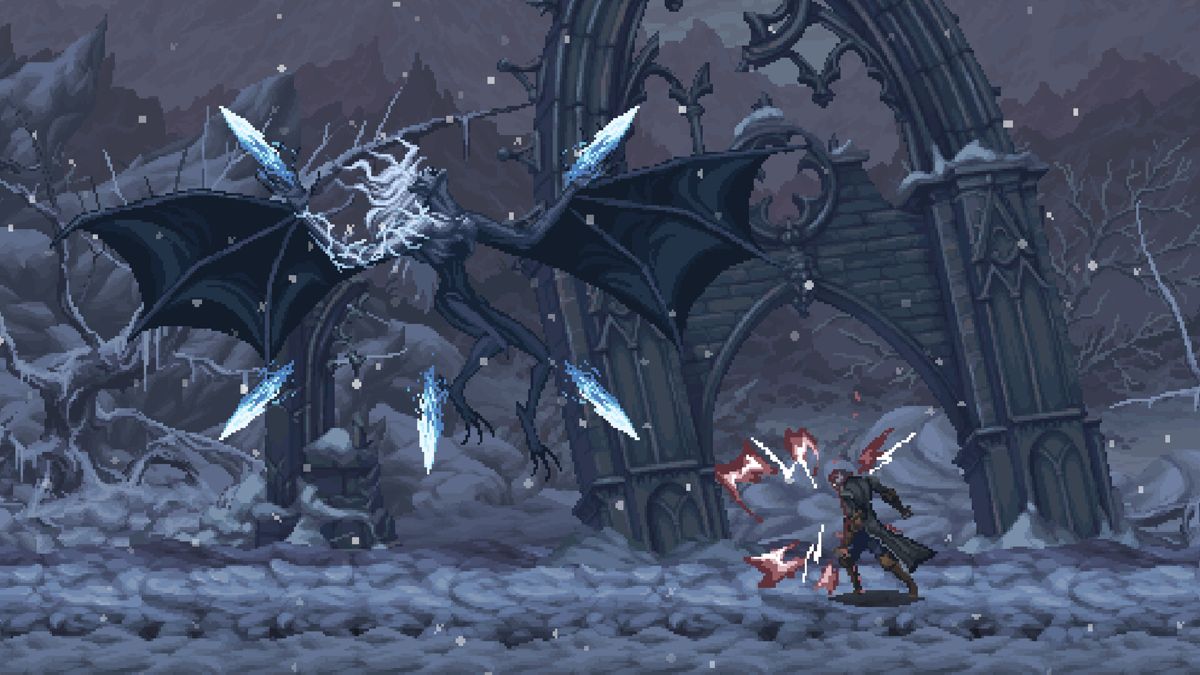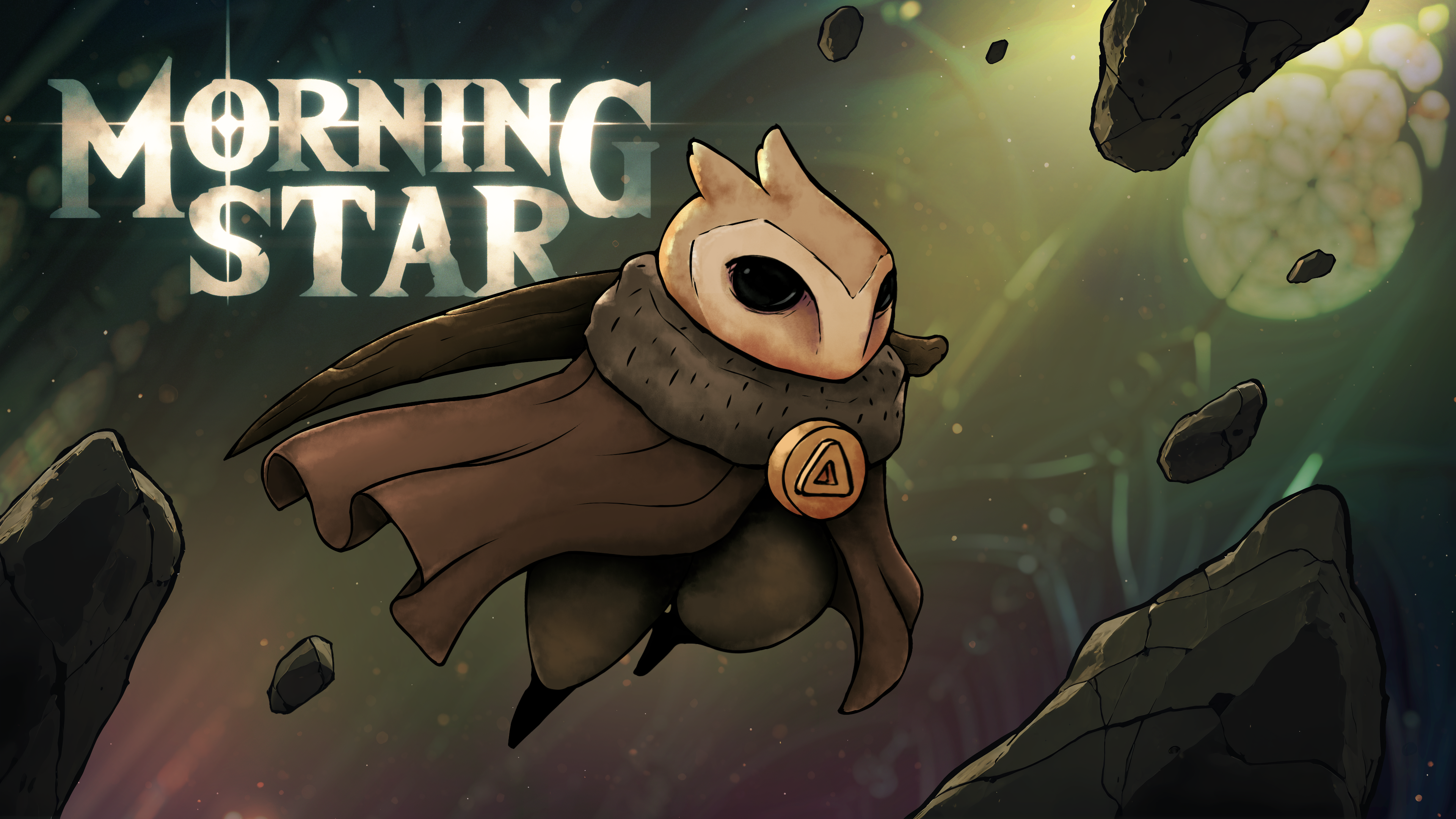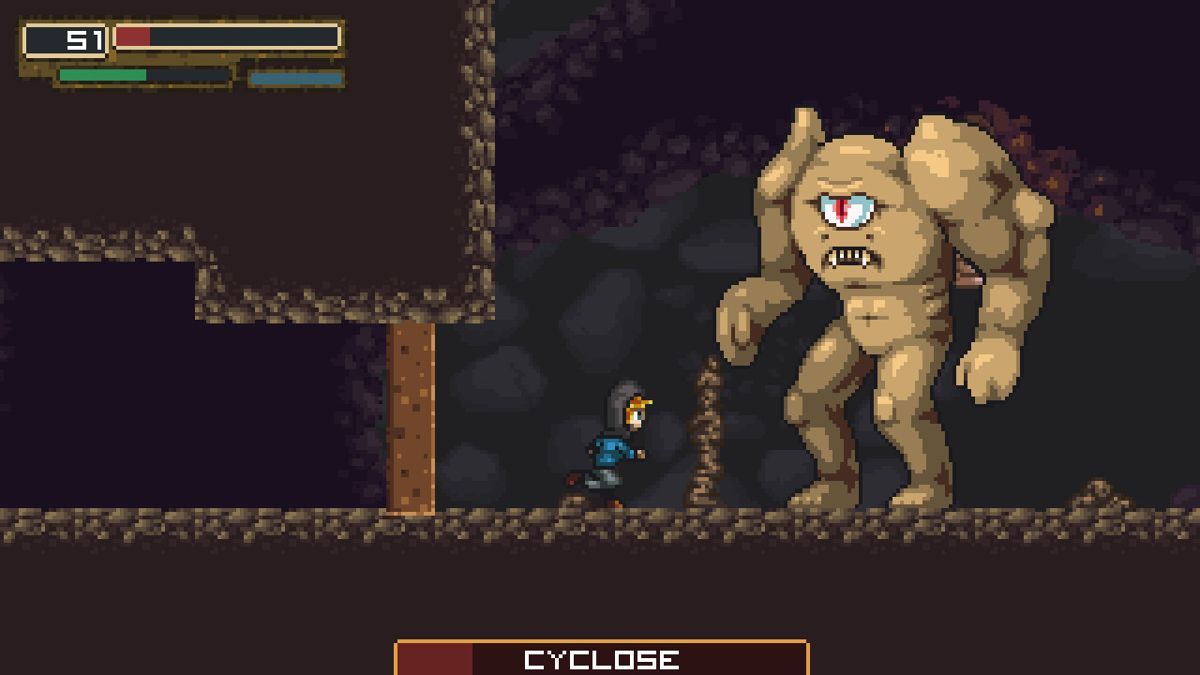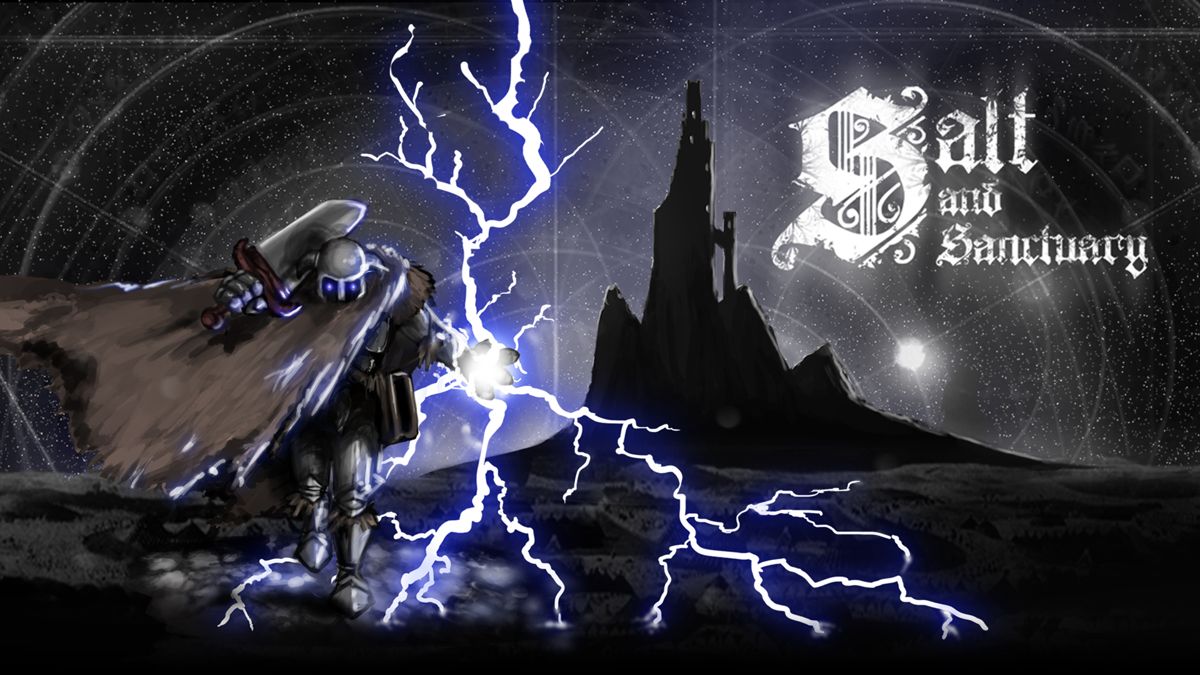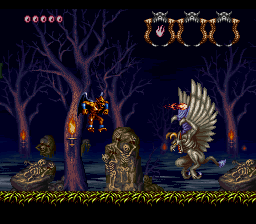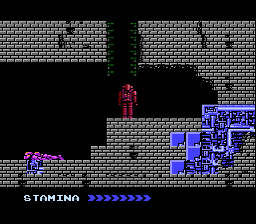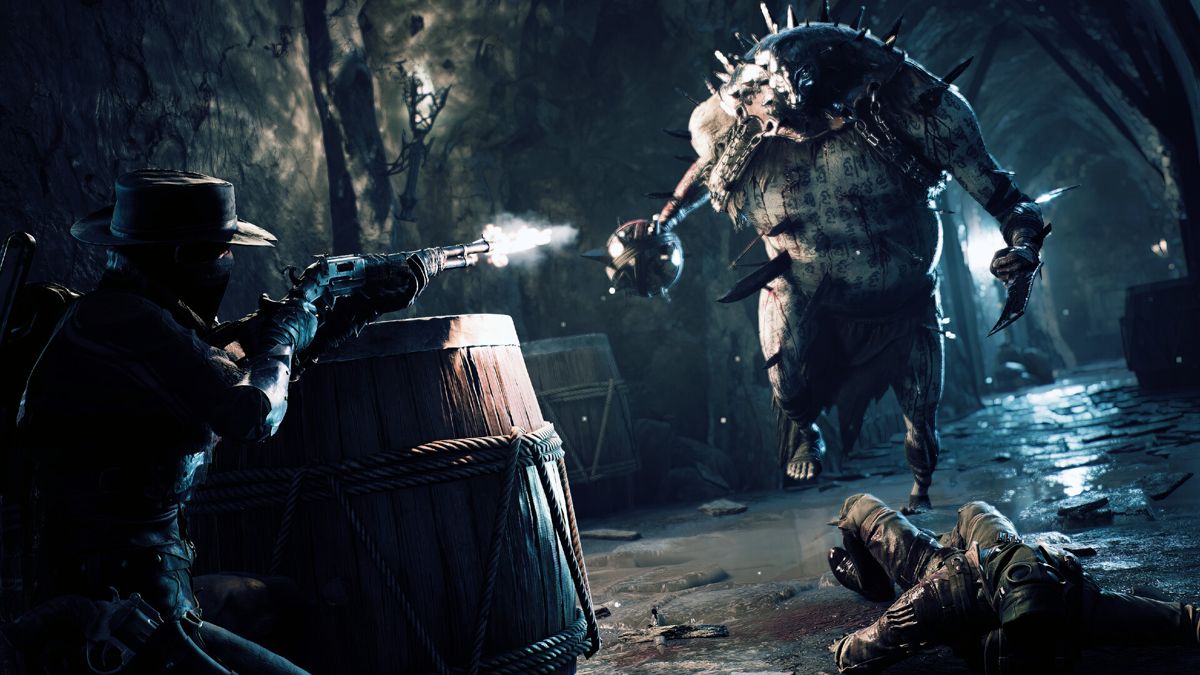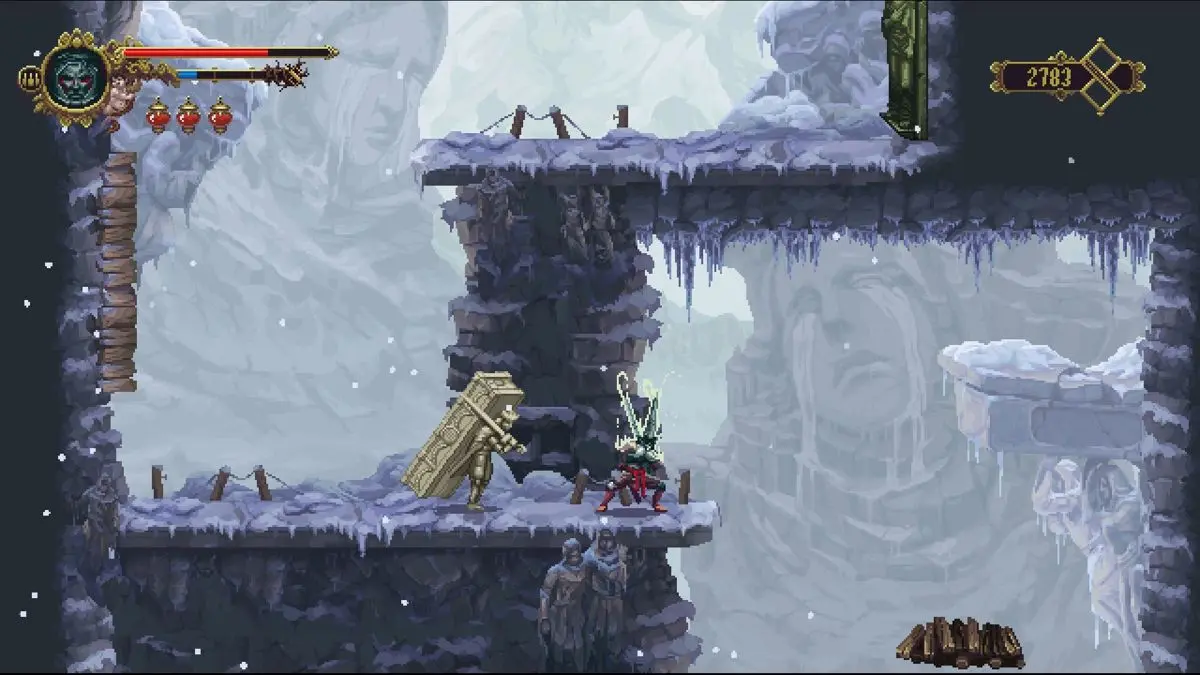Results
Ytash
aerial combat, dark, silent protagonist
Ytash is a fast-paced, 2D action game. Ignite your sword and explore the dark depths and towering heights of a forgotten island that consumed itself long ago.
Castle in the Darkness
fantasy, challenging, hidden areas
Castle in the Darkness (2015) is a Metroidvania-style action-platformer developed by BEHNAVSH. While it follows the familiar formula of the genre, it distinguishes itself with its unique aesthetic and atmospheric horror elements. The game's pixelated art style is heavily inspired by the Philips Videopac+ and Atari 2600 era, with a limited color palette and chunky sprites. However, the visuals are more than just a nostalgic throwback, as they effectively contribute to the game's unsettling and eerie ambiance. The game's narrative is minimalistic, leaving much to the player's interpretation. You take on the role of a nameless protagonist who finds themselves trapped within the confines of a foreboding castle. As you explore the labyrinthine corridors and interconnected rooms, you'll uncover clues about the castle's dark history and the fate of its former inhabitants. One of the standout features of Castle in the Darkness is its emphasis on environmental storytelling. The game's world is meticulously crafted, with each area conveying a distinct atmosphere and revealing snippets of lore through carefully placed details and imagery. Combat in the game is challenging but satisfying, requiring precise timing and strategic use of your character's limited arsenal. Enemies are varied and often pose unique threats, forcing you to adapt your playstyle and approach encounters tactically. In addition to combat, the game features intricate platforming sequences and puzzles that often require backtracking and utilizing newly acquired abilities or items. This encourages exploration and rewards players who take the time to uncover the castle's hidden secrets. While Castle in the Darkness may initially seem like a straightforward retro-inspired platformer, its atmospheric horror elements, environmental storytelling, and challenging gameplay make it a standout entry in the Metroidvania genre.
The Last Faith
igavania, pixel art, challenging
The Last Faith is a 2D side-scrolling action-platformer released in 2023, developed by Kumi Souls Games and published by Playstack. It falls firmly within the Metroidvania subgenre, with clear inspirations from games like Castlevania: Symphony of the Night and Bloodborne. The game is set in a dark, gothic world and features pixel art graphics with detailed backgrounds and fluid animations. Players control a character named Eric, exploring a vast, interconnected world filled with hostile creatures and challenging boss encounters. As typical for the genre, The Last Faith emphasizes exploration and character progression. Players gradually unlock new abilities and weapons that allow access to previously unreachable areas. The combat system is fast-paced and punishing, incorporating elements reminiscent of Soulslike games, including a stamina system and high difficulty. The Last Faith distinguishes itself with its intricate level design, atmospheric soundtrack, and a blend of melee and ranged combat options. The game also features multiple endings, encouraging replayability and thorough exploration. Given your familiarity with the genre, you'll likely appreciate The Last Faith's attempt to merge classic Metroidvania elements with more modern Soulslike mechanics, creating a challenging and atmospheric experience that pays homage to its influences while carving out its own identity.
Morning Star
wall jump, challenging, collectibles
Morning Star is an atmospheric Metroidvania that plunges you into a mysterious world filled with both haunting darkness and breathtaking beauty. As a cloaked figure with no memory of your past, you wield a powerful weapon and embark on a journey through a vast, interconnected realm. Along the way, you'll uncover secrets, confront terrifying creatures, and piece together a story that forces you to question your identity.h
Inexistence
environmental storytelling, mysterious, dark
Inexistence (2016) is a narrative-driven, first-person psychological horror game developed by Ninja Theory. Set in a surreal and ever-changing nightmare world, the game explores themes of trauma, mental illness, and the fragility of the human psyche. One of the game's standout features is its dynamic environment, which constantly shifts and distorts in response to the player's actions and emotional state. The game employs a unique "fracture" mechanic, where the very fabric of reality fractures and warps, creating unsettling and haunting scenarios that challenge the player's perception of reality. The game's narrative is non-linear and fragmented, reflecting the protagonist's fractured psyche. Players must piece together the protagonist's past and unravel the underlying mystery behind their harrowing experiences through environmental storytelling and cryptic clues scattered throughout the nightmarish landscapes. Inexistence is renowned for its atmospheric sound design and haunting score, which heighten the sense of dread and unease. The game's visual style is a blend of photorealistic and surreal elements, creating a disorienting and oppressive atmosphere that keeps players on edge. One of the game's most distinctive features is its lack of traditional combat mechanics. Instead, players must navigate the ever-changing environments and confront their deepest fears through exploration, puzzle-solving, and careful observation of their surroundings. Inexistence received critical acclaim for its innovative approach to storytelling, immersive atmospheric design, and thought-provoking exploration of mental health themes. However, some critics noted that its abstract nature and lack of clear objectives could be off-putting for players seeking a more traditional narrative experience.
Salt and Sanctuary
platformer, low fantasy, high fantasy
Salt and Sanctuary is a challenging 2D action-platformer with a deep, interconnected world and Souls-like combat. Players must navigate a mysterious, hand-drawn world, overcome treacherous foes, and uncover the secrets of a forgotten land.
Demon's Crest
challenging, hidden areas, interconnected world
Demon's Crest, released in 1994 for the Super Nintendo Entertainment System, is a metroidvania-style action-platformer developed by Capcom. While it adheres to the genre's core principles of exploration, backtracking, and ability gating, the game sets itself apart with its unique mechanics and narrative elements. One of Demon's Crest's most distinctive features is its emphasis on crests, magical gems that grant the protagonist, a demon named Firebrand, various elemental abilities. These crests allow Firebrand to transform into different demonic forms, each with its own set of attacks and abilities tailored to specific environments and puzzles. This mechanic adds a layer of depth to the gameplay, as players must strategically switch between forms to overcome obstacles and progress through the game's interconnected world. The game's level design is intricate and non-linear, encouraging exploration and rewarding players who meticulously scour every corner of the map. Secret areas and hidden passages abound, often concealing valuable power-ups or shortcuts that can assist in backtracking or speedrunning. Demon's Crest's narrative, while not groundbreaking, is noteworthy for its dark and mature themes. The game explores the conflict between demons and their celestial counterparts, with Firebrand caught in the middle as he seeks to prevent the awakening of a powerful, world-threatening entity. The story is conveyed through well-crafted cutscenes and environmental storytelling, adding depth to the game's world and characters. Visually, Demon's Crest is a standout title for the SNES, boasting detailed sprites, vibrant colors, and impressive parallax scrolling effects. The game's soundtrack, composed by Tokuro Fujiwara, is equally impressive, featuring haunting melodies and dynamic tracks that complement the game's Gothic atmosphere. While not a commercial success upon its initial release, Demon's Crest has gained a cult following among retro gaming enthusiasts and metroidvania fans, who praise its innovative mechanics, challenging gameplay, and atmospheric presentation.
Relics: Ankoku Yosai
dark, melancholy, horror
Relics: Ankoku Yosai, released in 1987 for the MSX2 and later ported to other platforms, is a unique and ambitious action-adventure game that stands out in the crowded genre of its time. Developed by Nihon Falcom, the game is set in a post-apocalyptic world where humanity has been nearly wiped out by a cataclysmic event, and the player takes on the role of a lone survivor tasked with unraveling the mysteries of the past and finding a way to restore the world. One of the game's standout features is its non-linear exploration and level design. Players are free to navigate the vast, interconnected world at their own pace, with multiple paths and secrets to uncover. The game encourages backtracking and revisiting previously explored areas as new abilities and items are obtained, adding depth and replayability to the experience. The combat system in Relics: Ankoku Yosai is also noteworthy. While it features traditional action-adventure combat mechanics, it also incorporates RPG elements such as character progression, equipment management, and a unique skill system. Players can learn and upgrade various abilities, allowing for strategic customization of their character's playstyle. The game's narrative is delivered through a combination of in-game events, environmental storytelling, and optional side quests and interactions. The world is rich with lore and mystery, and players are encouraged to piece together the narrative through exploration and discovery. Additionally, Relics: Ankoku Yosai features an impressive soundtrack that complements the game's atmospheric and often haunting environments. The music shifts seamlessly between different tracks, creating a dynamic and immersive audio experience. Despite its age, Relics: Ankoku Yosai is often praised for its ambitious design, compelling storytelling, and innovative gameplay mechanics that set it apart from its contemporaries. It is considered a cult classic among fans of the action-adventure genre and a notable entry in Nihon Falcom's catalog of games.
Remnant II
shooter, challenging, varied biomes
Remnant II is an action-packed third-person shooter with strong RPG elements, developed by Gunfire Games and published by Perfect World Entertainment. Released in July 2023, it's the sequel to the 2019 game Remnant: From the Ashes. As a fan of the genre, you'll appreciate that Remnant II builds upon its predecessor's foundation, offering a more refined and expanded experience. The game retains its core loop of intense combat, procedurally generated worlds, and challenging boss battles, while introducing several new features: 1. Expanded Archetype system: Players can now choose from multiple archetypes (classes) and even combine them for more diverse builds and playstyles. 2. Enhanced multiplayer: The game supports up to 3-player co-op, with improved scaling and balance for group play. 3. More varied environments: The game features new realms to explore, each with distinct aesthetics and enemies. 4. Improved crafting and progression systems: Players have more options for customizing their gear and abilities. 5. Dynamic events and quests: The game introduces more varied and unpredictable encounters throughout its procedurally generated levels. 6. Increased replayability: With multiple endings, secrets, and build options, the game encourages multiple playthroughs. The game maintains its Souls-like difficulty and the fusion of gun combat with melee and dodging mechanics. As someone familiar with the genre, you'll likely appreciate the enhanced depth in character customization and the expanded lore of the Remnant universe.
Blasphemous
platformer, low fantasy, grindy
Blasphemous is a challenging and atmospheric 2D action-platformer set in the dark, gothic world of Orthodoxia. Players take on the role of the Penitent One, a mysterious and tormented figure, on a quest to uncover the secrets of the Miracle and put an end to the endless cycle of death and rebirth.
Filters
Search Term
Properties
Platforms
Tags (include)
Tags (exclude)
Get Your Game Noticed
Advertise your game with MetroidvaniaDB and reach a community of people who know exactly what they're looking for:
Your game.
Native & Banner Ad Spots
Multi-week Discounts
Game Launch Packages
Discounts for Indie Developers

